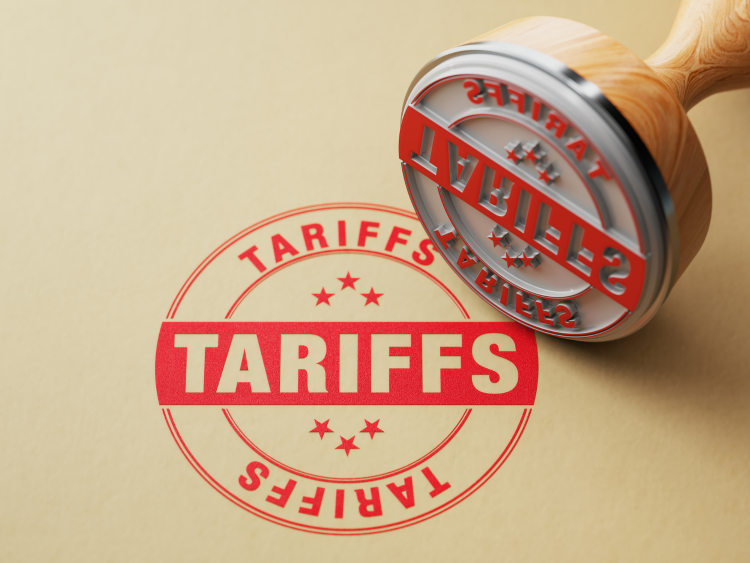Trade Cases

EU-U.S. Target Nov. 1 for Section 232 Accord: EU Official
Written by Michael Cowden
August 3, 2021
The United States and the European Union aim to resolve their differences around Section 232 tariffs on the EU by Nov. 1, an EU official said.
“On the U.S. Section 232, both sides confirmed readiness to find a solution by 1 November,” the EU official told Steel Market Update (SMU).
![]() “In terms of progress, both sides agreed to move forward with some concrete solutions in line with key parameters, such as restoring historic trade flows and to have a WTO-compliant system in order to avoid managed trade,” the official said.
“In terms of progress, both sides agreed to move forward with some concrete solutions in line with key parameters, such as restoring historic trade flows and to have a WTO-compliant system in order to avoid managed trade,” the official said.
The U.S. Commerce Department and the Office of the U.S. Trade Representative (USTR) did not respond to requests for comment for this article.
The White House confirmed in June that the U.S. and EU were seeking to resolve “existing differences” on Section 232 tariffs on steel and aluminum by the end of the year.
Section 232 tariffs, 25% in the case of steel and 10% in the case of aluminum, were rolled out by the administration of former President Donald Trump in 2018. The action came as a surprise at the time because the national security tariffs were applied to traditional U.S. allies such as the EU.
Steel consumers in general oppose Section 232. But the national security tariffs and quotas have been popular with U.S. mills and the United Steelworkers (USW) union.
The American Iron and Steel Institute (AISI), a lobbying group for U.S. mills, has said that U.S.-EU talks to resolve their differences over Section 232 don’t necessarily mean the national security tariffs will be lifted anytime soon.
And Cleveland-Cliffs President and CEO Lourenco Goncalves said during CRU’s Steel Decarbonization Strategies 2021 Virtual Conference earlier this summer that Section 232 tariffs could be replaced by a carbon border adjustment process.
“Section 232 was never supposed to be a permanent solution,” said Goncalves. “It was a stop-gap measure that played a very important role. Massive investments have been deployed in the U.S. due to Section 232. … It served its purpose.”
Goncalves stressed at the time that any such mechanism would have to account for Scope 1, Scope 2 and Scope 3 emissions.
Scope 1 refers to emissions generated directly by a producer such as a steel mill. Scope 2 refers to emissions related to the energy that powers that company. And scope 3 includes other emissions associated with a mill’s manufacturing process—such as emissions embedded in imported pig iron.
Section 232 tariffs have contributed in part to U.S. steel prices being the highest in the world. The price difference between domestic steel and that produced abroad has ballooned to its widest point ever.
By Michael Cowden, Michael@SteelMarketUpdate.com

Michael Cowden
Read more from Michael CowdenLatest in Trade Cases

SMU Survey: Less support seen for Trump tariff policies
Meanwhile, an increasing number think it's too early to say whether the penalties are going to bring more manufacturing to the US.

CRU: USW seeks exclusion for Canada from Trump’s tariffs
The union is also urging stronger enforcement against countries such as China which break trade rules, and a coordinated Canada-US strategy to protect union jobs across the North America

Price on trade: A lot happened last week – and it wasn’t all about tariffs
Should foreign investment be allowed to reshape the American steel Industry? Not to be lost in the recent on-again-off-again tariff frenzy, Nippon Steel’s proposed takeover of U.S. Steel has also found itself in President Trump’s crosshairs when it comes to trade and industrial policy. Nippon Steel initially announced its nearly $15-billion bid for U.S. Steel […]

Trump signs executive order aimed at making US shipbuilding ‘great again’
President Trump on Wednesday signed an executive order meant to breathe new life into American shipbuilding and curb Chinese dominance in the sector.

Trump still against selling USS to Japanese firm: Report
Despite ordering a new review of Nippon Steel’s bid for U.S. Steel, President Trump said he is still against selling USS to a Japanese company, according to media reports.
